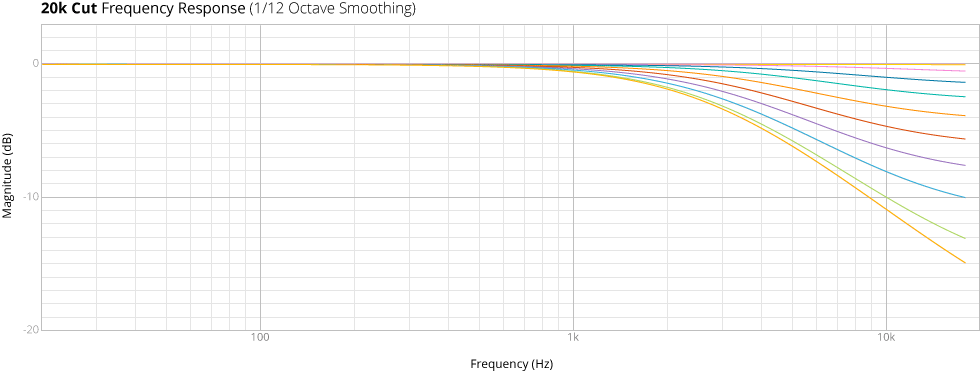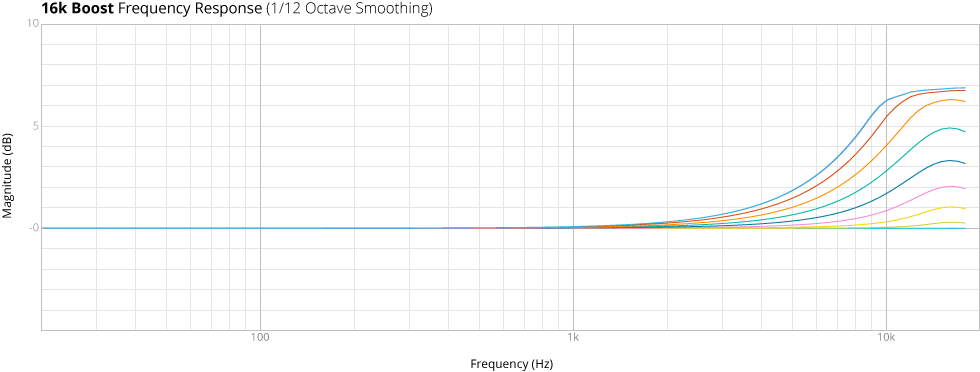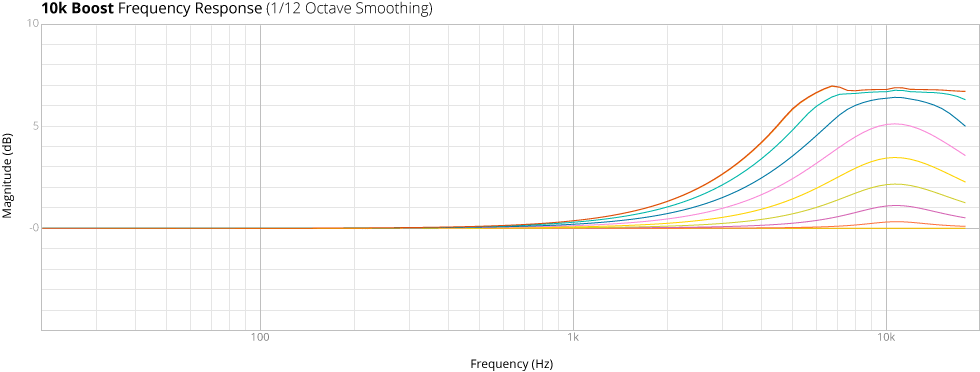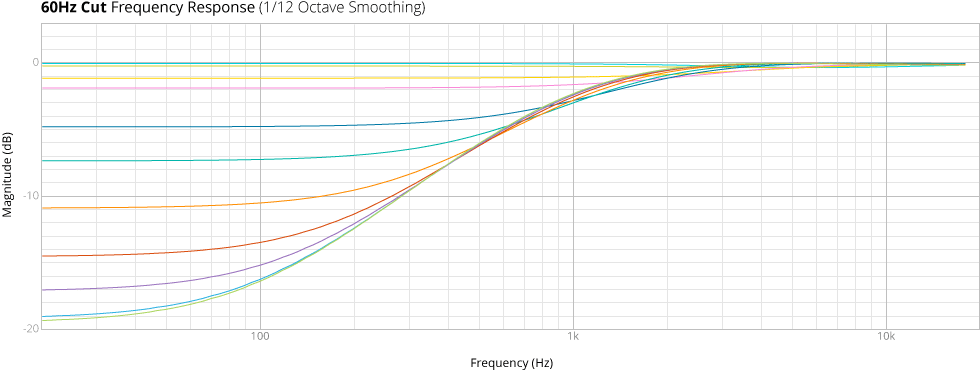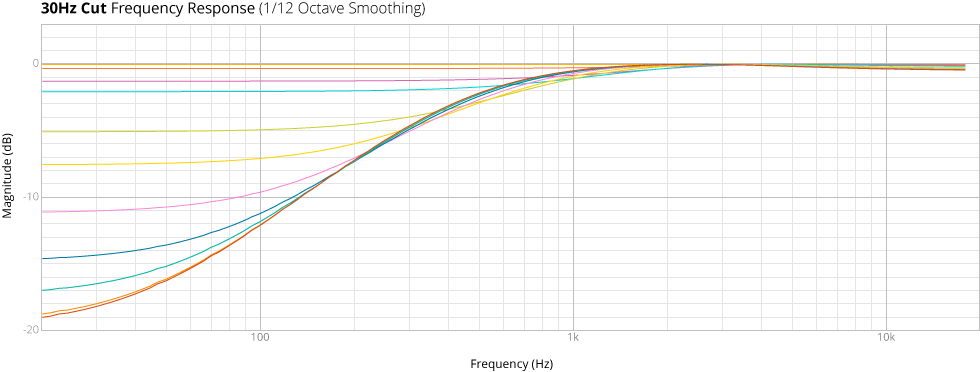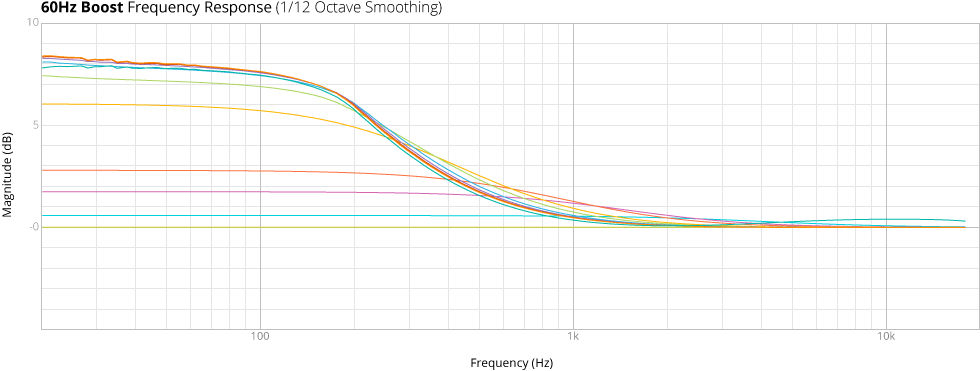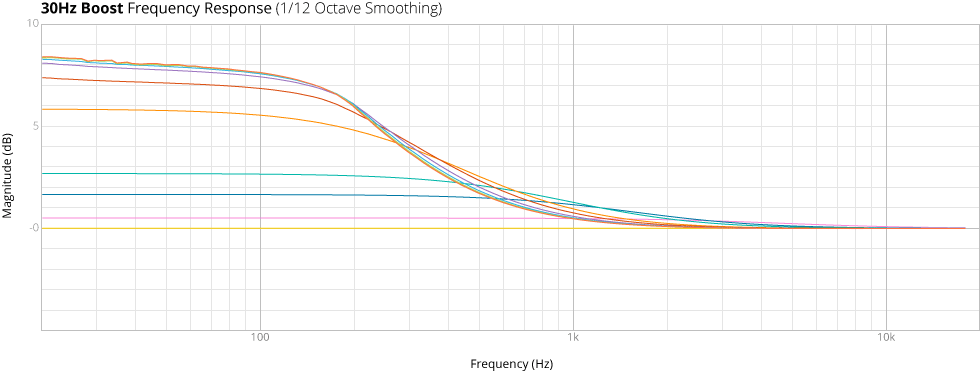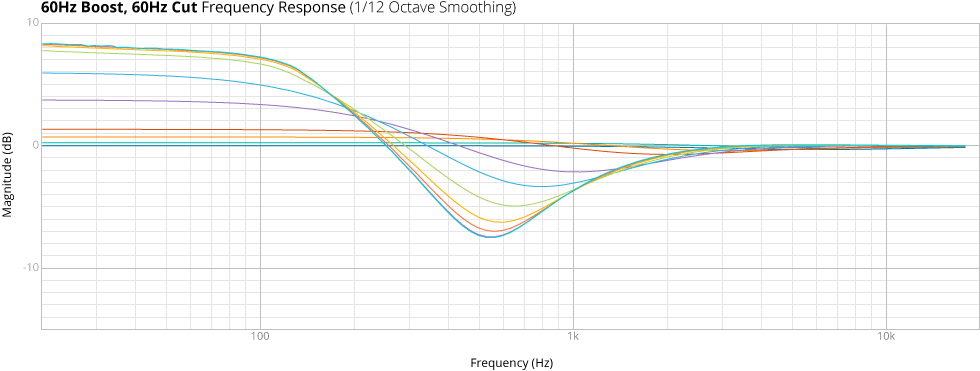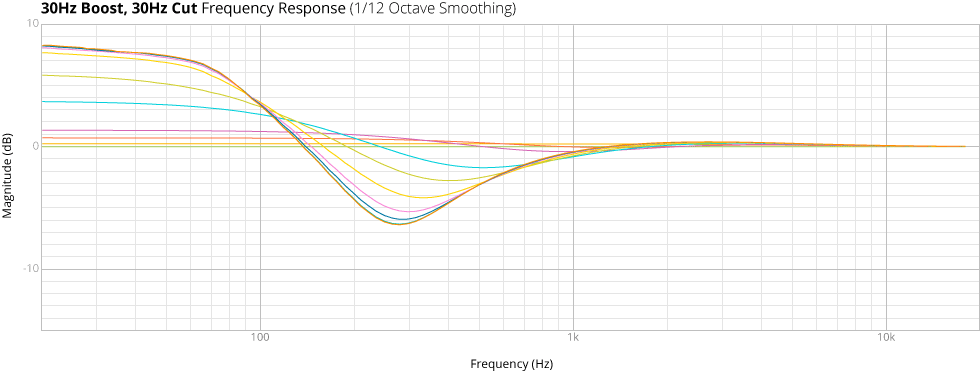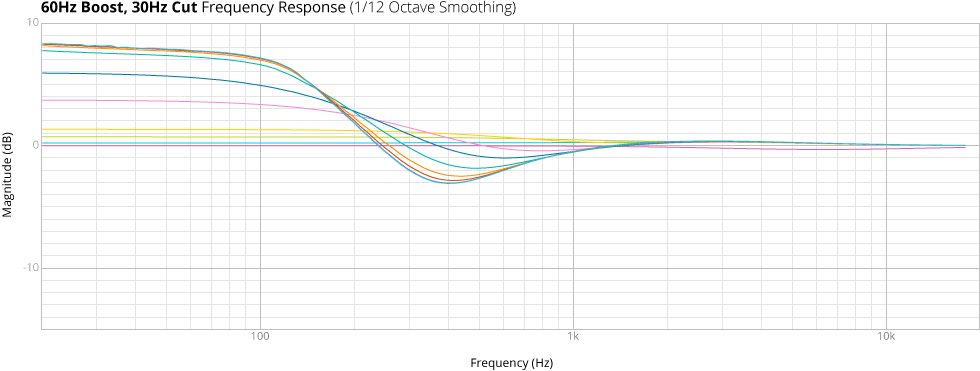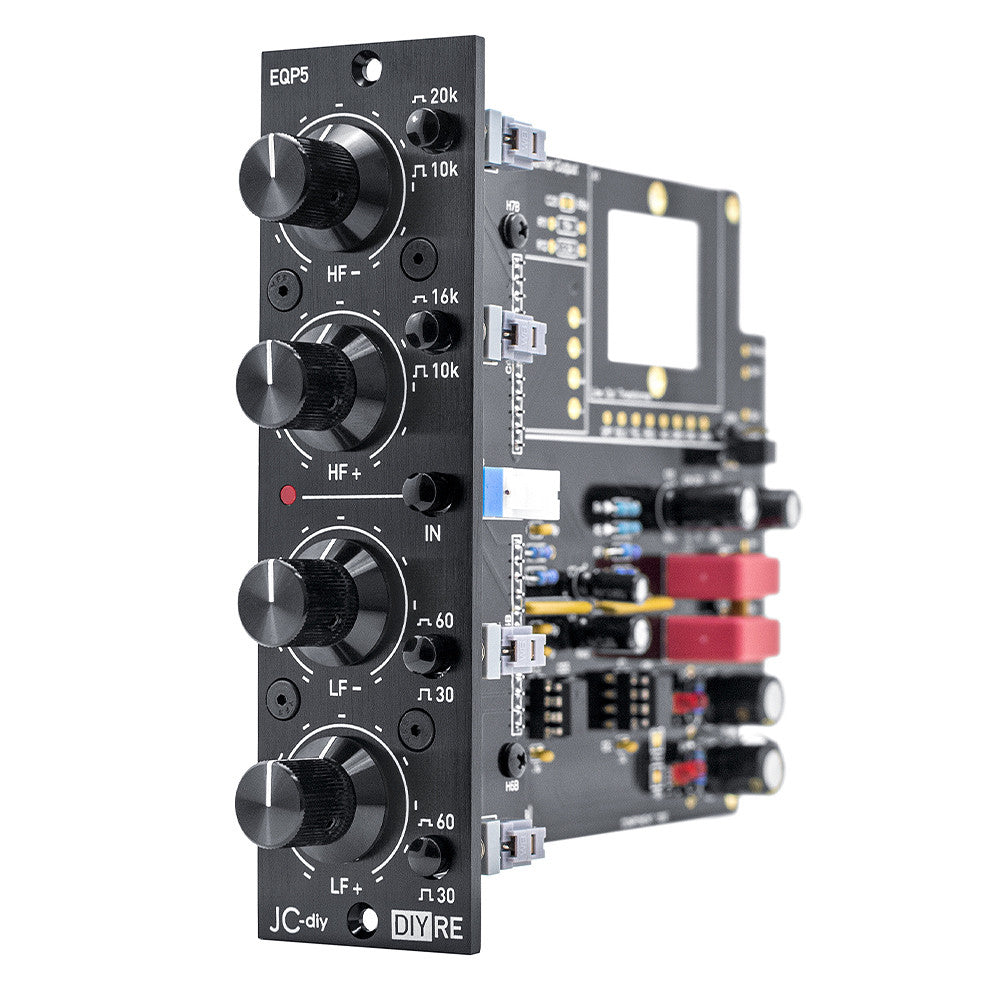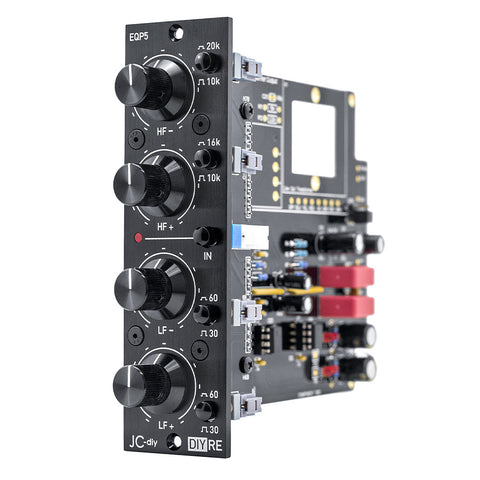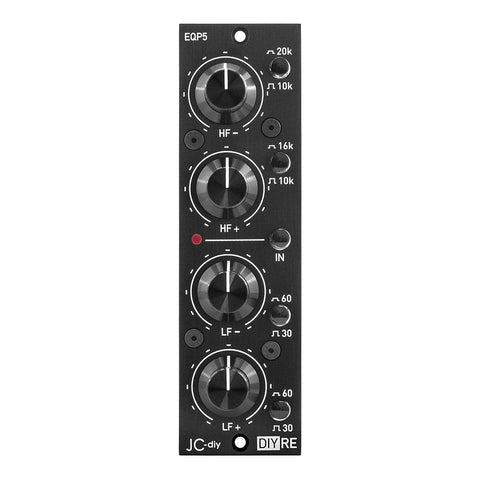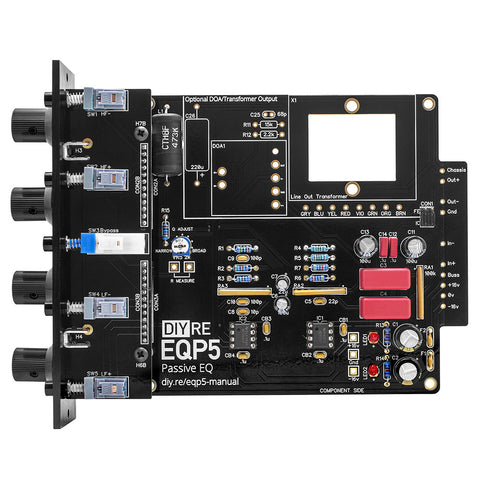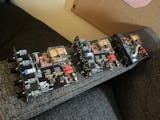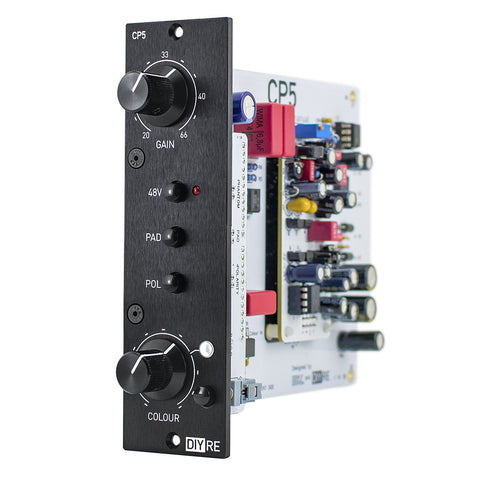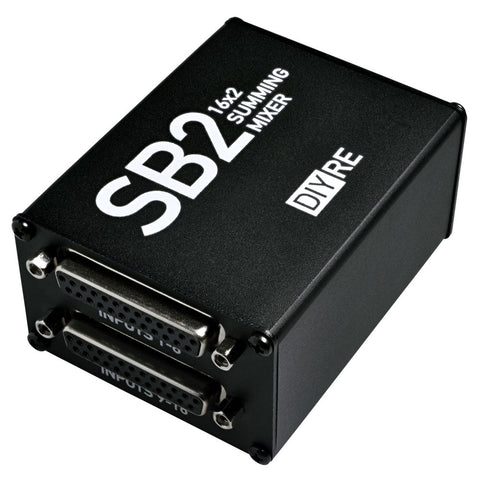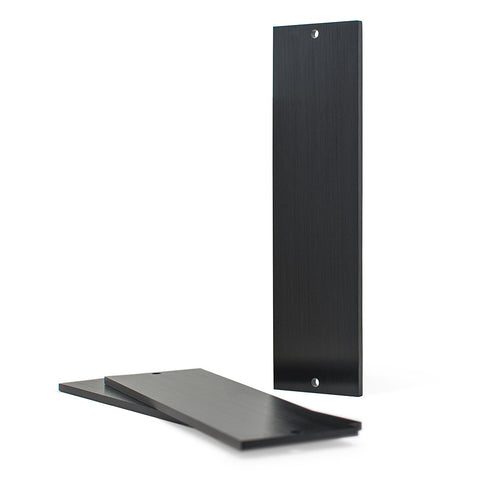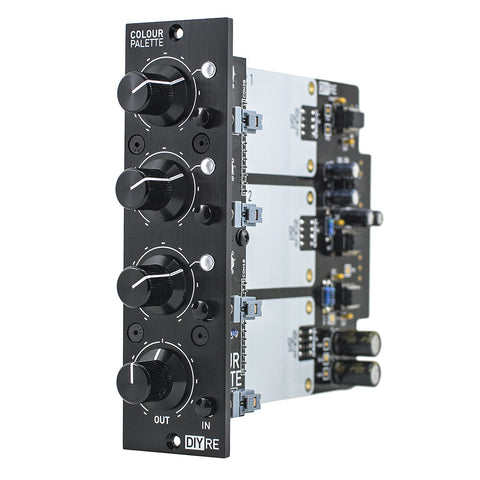The EQP5 is a premium tone-shaping EQ based on the prized Pultec EQP filter circuitry.
The World's Most Musical Filters. The EQP5 employs the passive filter circuitry made famous by Pultec's legendary EQP series of equalizers. Decades after their introduction, these EQ's remain coveted for their uniquely musical and natural behavior.
Modern Clarity or Vintage Tone. Choose between a clean and modern or vintage and colored output stage. If both outputs are installed, you can switch between them with a solderless jumper on the board.

The Modern (stock) output is a clean, robust, balanced output for excellent noise performance. Choose this output to use the EQP5 for transparent, natural tone-shaping.

The optional Vintage output employs an API-style DOA (discrete opamp) and custom transformer for a livelier dynamic character. The vintage output gives signals a more visceral, forward feeling that helps them translate clearly in a mix while requiring less level to do so. The solid-state Pultecs, the sound of which many engineers claim to be sweeter than that of the earlier tube units, use the same DOA/transformer output scheme.
Designed for DIY. The EQP5 was designed from the ground-up to be a satisfying DIY project. Our photo manual will guide you through every step of the assembly. And the circuit board contains extra capacitor and inductor footprints for customizing the frequency bands.
Features
- Stepped controls (21 positions) for easy recall and stereo operation
- Anodized aluminum knobs and front panel
- Pushbutton frequency-select switches for each band
- Q-adjustment via PCB trimpot
- Optional vintage DOA/transformer output section
- Kit includes every component required to build the EQP5
- Step-by-step manual and guaranteed support
- Fully compatible with the 500-series format
Still have questions? Check out the FAQ and Audio tabs above for more info and samples.
The EQP5 is the first product collaboration between DIYRE and JC-diy. JC-diy is the brand of Joel Cameron, founder of Rascal Audio. To learn more about how the EQP5 came to be, check out Joel's series of EQP5 design blog posts.
What the Pros are Saying

"I been using the EQP5 a lot lately and really dig how smooth it is. There isn't really a bad place for it. Any place I've used it, it helps. It doesn’t feel all phase shifty like some EQs do when you crank on them. I have to check that it’s in because it’s so natural sounding. It’s definitely in. Natural as f*ck. The EQP5 is a legit tool regardless of cost. I use this along side my Lang and Pultecs."
-Rob Schnapf
Elliott Smith, Guided by Voices, The Vines, Saves the Day

"The EQP5 sounds great, and is sneakily a very flexible tool. A passive shelving EQ is a great addition to any engineer’s arsenal, and the EQP5 is a no-brainer for DIY experts and newcomers alike."
All of the samples below are processed using only the EQP5. Each sample switches between the dry (no EQP5) and processed tracks every two bars (eight counts).
Drums. These samples demonstrate the EQP5 on a stereo drum mix:
Stem Mix. A set of six stems—lead vocals, background vocals, bass, guitars, drums, and pads/acoustic guitar—were processed with the EQP5. The sample switches between the raw mix and the mix after stem processing with the EQP5.
Mastering. This sample demonstrates using the EQP5 on the stereo master. The samples switch between the processed stem mix with no mastering, and the same stem mixes with EQP5 processing on the stereo bus. Notice how naturally the EQP5 widens the stereo image, brings the drums forward, and helps the vocals find the perfect place to sit in the mix.
Modern vs Vintage. Finally, the samples below demonstrate the difference between the Modern and Vintage outputs. Notice how the Vintage output brings the snare slightly forward in the mix, and adds a more "finished" quality to mix. For these samples, we used the RED-25 DOA.
The track in the samples is "Walls" (early reference mix), by Robinson, https://robinsonmusic.bandcamp.com
Produced by James Childs,http://www.jameschildsmusic.com
Which Pultec model(s) is the EQP5 based on?
The filter used in the EQP5 is derived from the filter design from Pultec’s coveted EQP-series of equalizers. As such it features low frequency boost and cut (shelving), a high frequency boost (peaking) and a high frequency cut (shelving). The stock frequencies are taken from the EQP-1A3 and are exceptional for general sweetening of individual signals and mixed program material. Unlike the Pultec model, however, the two LF bands (boost and cut, respectively) have separate frequency selections (instead of a single switch that selects both boost and cut), so you can cut at one frequency and boost at another, which cannot be done with original Pultecs or their clones.
What's the difference between the Modern and Vintage outputs?
The stock, Modern output design uses two IC (integrated circuit) opamp stages: one to make up level lost in the filter circuit, and the other as an inverting stage to provide a differential (balanced) output. This design provides an overall neutral character to the EQP5 that allows users to sweeten the audio spectrum while leaving the signal otherwise untouched.
The optional, Vintage output uses a discrete opamp (any DOA fitting the API 2520 footprint and pinout can be used) and a custom output transformer (wired 1:2) to give the EQP5 a more visceral, dynamic character that gives signals additional authority and helps them translate clearly in the mix while requiring less volume and processing to do so. The solid-state Pultec EQPs, the sound of which many engineers claim to be sweeter than that of the earlier tube units, use this same DOA/transformer output scheme.
Can I modify the frequencies?
Absolutely you can! The documentation included with each kit includes optional component values for many additional frequency choices for each band, so the more adventurous DIYer can customize their EQP5’s to their hearts content.
Why are there separate knobs for boost and cut?
Because this is the approach used on the original Pultecs, upon which the EQP5 is based. Accordingly, each boost or cut function features its own knob. The full clockwise throw of these knobs is dedicated to either boosting or cutting its relative frequency. Because the full throw of these knobs is used only for boosting or cutting the resolution of the knobs is quite precise and makes the EQP5 perfect for refined processing of program material, such as 2-mix processing and mastering.
Where are the tubes?!
No tubes in the EQP5, sorry. The optional output shares topology with the later, solid state Pultecs, but we didn’t want the complexity of build (or the lethal voltages!) of quality vacuum tube circuits. Plus many people prefer the character of the solid state Pultecs over the earlier units with the differential vacuum tube stage.
Can I adjust the bandwidth on the HF boost band like I can on an original Pultec?
Yes, you can! The EQP5 provides a single-turn trimpot on the main PCB (printed circuit board) that allows adjustment for the HF+ bandwidth. Note that the setting of the Q trimpot directly affects the total available boost of the HF+ band. To understand why this is so, a brief explanation is warranted:
The EQP5’s filter is entirely passive and produces an insertion loss across the entire frequency spectrum when controls are set flat. When one implements a boost, the filter is actually affecting a negative or reverse cut (which reduces the amount of cut across the relevant frequency range, allowing more of those frequencies through–a perceived ‘boost’). Being passive, the total amount of energy affected by the HF+ filter is fixed. When all of this energy is focused on a narrower set of frequencies via a narrow Q setting, the resulting total boost range is greater than when that energy is spread out among a wider range of frequencies (as it is with a broader Q setting). As a result the same position of the front panel’s HF+ knob will result in higher or lower absolute boost, depending on the setting of the Q trimpot.
Given that wider Q settings yield more natural sounding results (for a broader range of applications), we recommend setting the trimpot somewhere between 12 and 2 o’clock. But feel free, of course, to play with this control to see what settings work best for your applications. The PCB provides test points for measurement of this trimpot, so settings can be logged for channel matching and/or later recall.
Why not put the bandwidth control on the front panel?
Front panel real estate on a 500-series module is limited, so there is often much weeping and gnashing of teeth when determining what controls will make it onto the front of the unit. Being able to provide all the front panel controls of the EQP5 plus a bandwidth knob would have made the build more complex and considerably more expensive. Besides, not all Pultec models included this control. For example, the HF+ band of Pultec’s EQH-2 (a close cousin to the EQPs) had a fixed Q with no user adjustment available. In our experience, of all the controls on an EQP-style program EQ the bandwidth seems to get the least use, so we decided to move it to the PCB, so users can still make adjustments as desired.
The PCB provides test points for measurement of the Q trimpot, so settings can be logged for channel matching and/or later recall.
30Hz? Is that really a useful frequency?
Absolutely! The 30Hz position is one of the original four LF choices on the Pultec EQPs, and one of our favorites to boot (hence its inclusion on the EQP5)! One could certainly argue that 30Hz isn’t the most musically useful frequency for an EQ, but this isn’t your typical EQ. The slope of these LF filters are so broad that they affect frequencies above 1kHz (boost) and up past 3kHz (cut), making these filters extremely musical (and broadly applicable) regardless of their labels. Check out the audio samples to hear these filters in action.
Does the EQP5 sound like an original Pultec?
Yes and no. Helpful? Let me explain.
The EQP5’s filter design and available frequencies are taken directly from Pultec’s classic EQP-1A3. As such it shares the same ability to sweeten the frequency response of all kinds of signals as the classic Pultec. Where the EQP5 differs, sonically, is in the signal path.
The stock signal path of the EQP5 is an all-IC, transformerless design. As such it delivers a purer signal which is more faithful to the signal being processed compared to the more colored signal path of vintage units. If you want more vintage color then opting for the discrete opamp/transformer-balanced output is the way to go with your EQP5. This arrangement, used in the later, solid-state Pultecs, gives your signals a lively, dynamic, more opulent characteristic that is as much felt as it is heard. Check out the examples of this output in action, even without the filter engaged to see what we mean.
- EQP5 Assembly Guide
- EQP5 Vintage Output Assembly Guide
- Interactive Build Map
- EQP5 Optional Frequency Mods
- EQP5 Recall Sheet (Vertical)
- EQP5 Recall Sheet (Horizontal)
The sweeps below demonstrate every band of the EQP5, as well as using the lower boost/cut bands simultaneously. The different colored lines represent different cut/boost settings. The EQP5 was set with a medium bandwidth.
